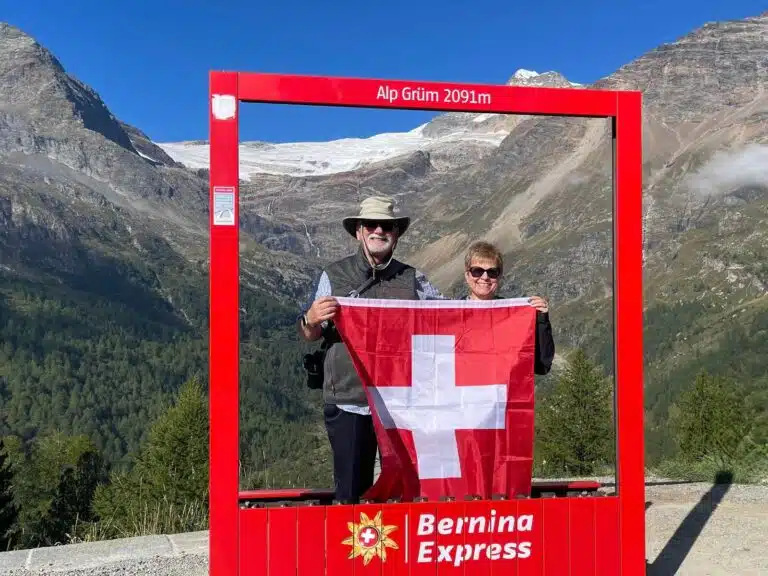Spend the day on a Glacier Express with ECHO Rails.
It’s early morning – the early morning sun paints the sharp peaks of Piz Corvatsch, Corviglia and Piz Nair bright orange. The valleys are still wrapped in sleepy twilight, dogs barking here and there. There’s a chill in the air, and the lake of St. Moritz is still and quiet, only a lonely bird hidden among the twigs of an ash tree chirps cheerfully.
The only buzz comes from a group gathered at the station. Quiet murmurs, occasional yawns, and the sound of steps resonating in the deserted halls of the station. Besides us, nobody. Despite the early hours, the air is filled with excitement.
Today, we’re spending a day on a Glacier Express.
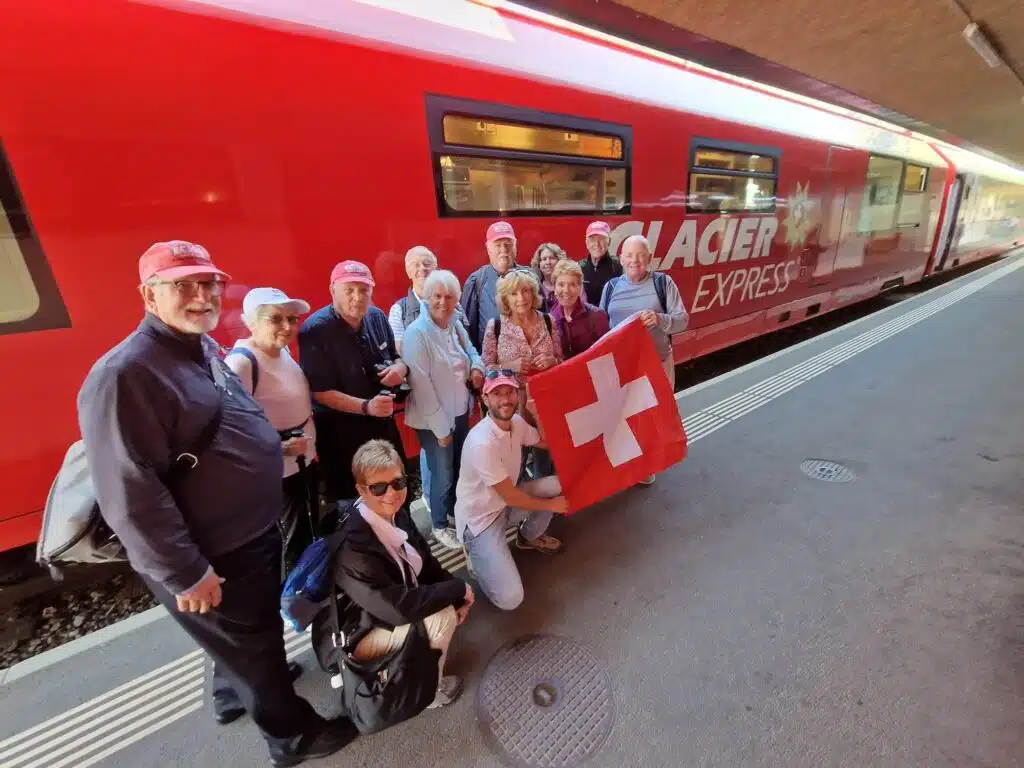
St. Moritz to Chur
Our day on a Glacier Express starts early but comfortably. As we step into the carriage, we’re struck with the luxury interior. The first-class car on the Glacier Express is a true private salon on wheels. High panoramic windows smoothly melt into the glass ceiling, letting in the first shy sun rays. Looks like there’s a good reason to travel with Glacier Express.
The chairs are big, plush and comfortable. Each is equipped with an entertainment unit, including a pair of headphones, which, as we are explained, can be used to listen to dedicated messages sharing interesting facts about the route along the way. Chairs are arranged in fours and twos, with a big table in between, so that everyone can sit, eat, read, or simply contemplate in peace.
Without a single sound, the train starts. We’re leaving St. Moritz heading towards our first stops still in Engadine: Samedan, Filisur and Tiefencastel. Around the latter one, we can admire the panoramic view of the famous Landwasser Viadukt. The train passes it at a slower pace so that everyone can take their time to admire it.
The Albula stretch is listed as a UNESCO World Heritage site, and one finds out why as the train traverses the slopes through tunnels, bridges, and impressive loops. By now everyone is wide awake, the first round of coffee and tea served at our tables by on board staff is drank, and we can fully focus on the landscape around us.
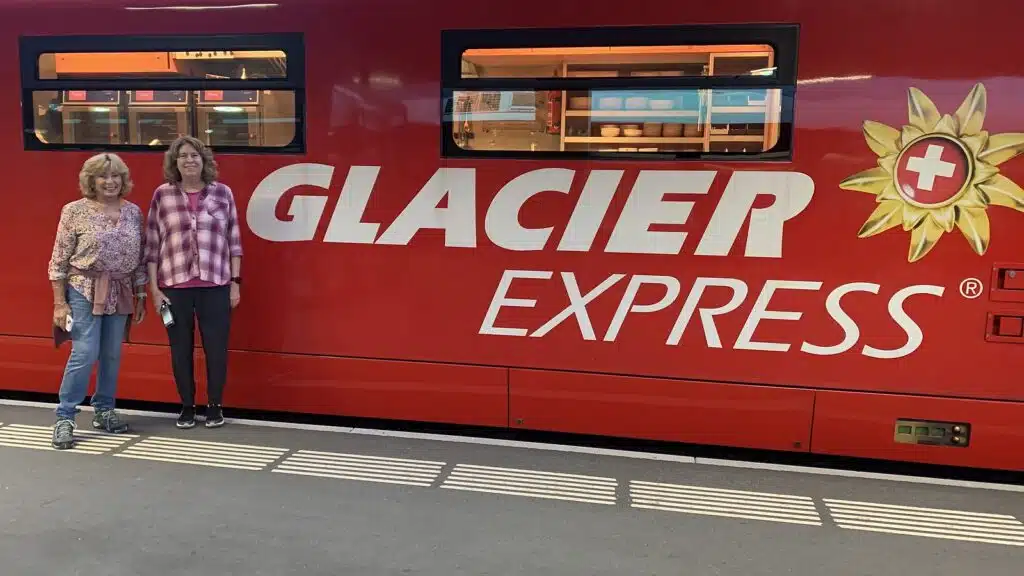
Chur to Andermatt
After around two hours, we arrive at Chur. Here, the train stops for around 10 minutes, and more people join us – now the compartment is really full.
We’re curious to see who’ll meet. Nothing bonds just like train travel does, and sure enough, introduction rounds begin, and people start getting to know one another.
Our day on a Glacier Express continues. We’re leaving Chur now and entering the Rhine gorge, known as the Grand Canyon of Switzerland. The stretch between Reichenau and Ilanz really reminds us of the original Grand Canyon: tall, steep cliffs fall straight into the pale blue waters of the Rhein fed by the melting glaciers.
The current is strong, and the river looks dangerous as it crushes and twirls around boulders. Here and there, we see swaths of gravel and low bushes: a team of young people seems to be preparing for a rafting adventure.
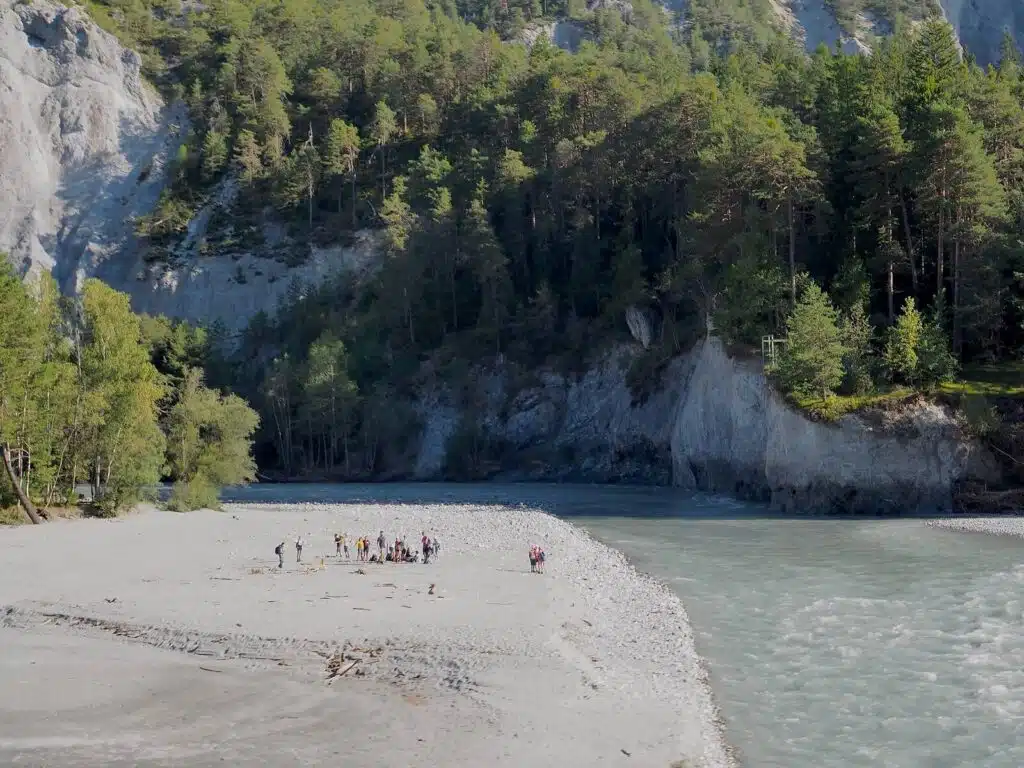
Oberalp Pass
Soon after, the train starts its climb to the Oberalp Pass, the highest point of the journey. We’re deep in the Alps, and only a few seasonal chalets dot the pastures. Occasional car passes down the winding road as we climb higher and higher.
Disentis and Sedrun massifs are to our left, their proud peaks cutting into the sky. We can see patches of snow and glaciers, including the famous Rhone glacier.
Finally we reach the pass: the sun is shining and suddenly we see a huge herd of cows grazing slowly right beside the train. The train slows down for us to see everything and then begins the descent to Andermatt.
The winding tracks let us admire the stunning landscape below and ahead: Andermatt in the foreground, Hospental below, and the peaks of the Bernese Alps marking the horizon. We’re crossing the demarcation line – we’re now officially in canton Uri.
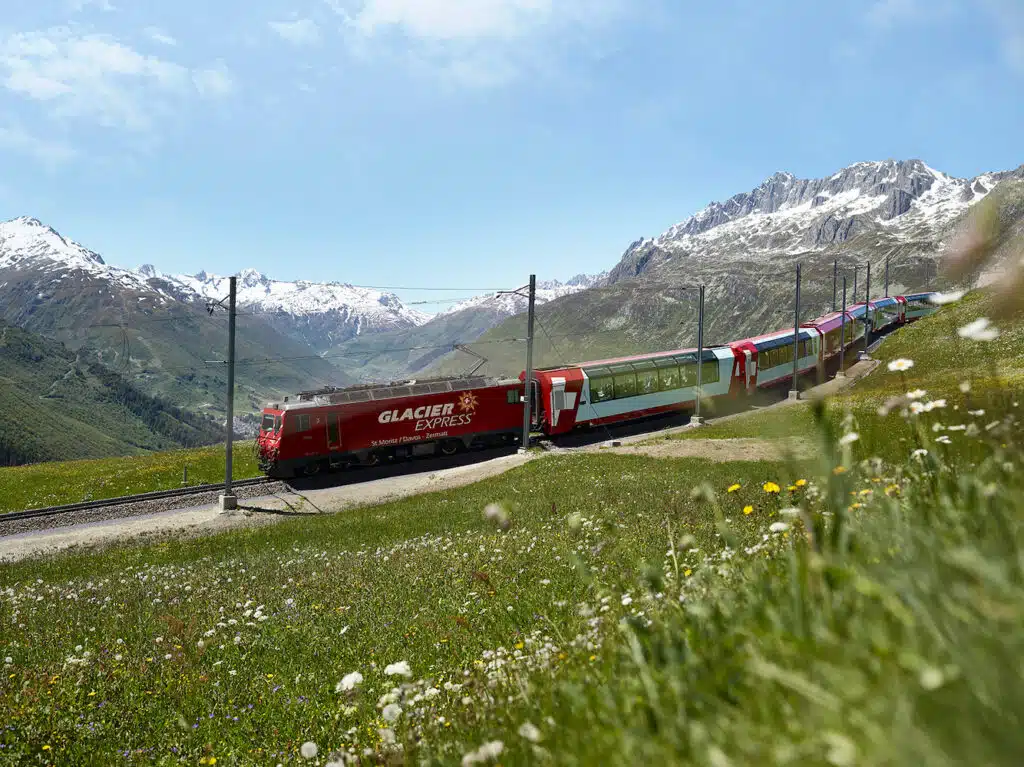
End stop: Andermatt
Our day on a Glacier Express comes to an end. Our group leaves here, in Andermatt. We have two days of exciting adventures awaiting us here: first, a fondue dinner, then a visit to a declassified military bunker, and finally, a ride with Furka Steam Railways from Real to Oberalp.
We say goodbye to our new friends who will continue now through the Goms Valley to Visp and Brig before heading up the mountains to the final stop of the Glacier Express, Zermatt.
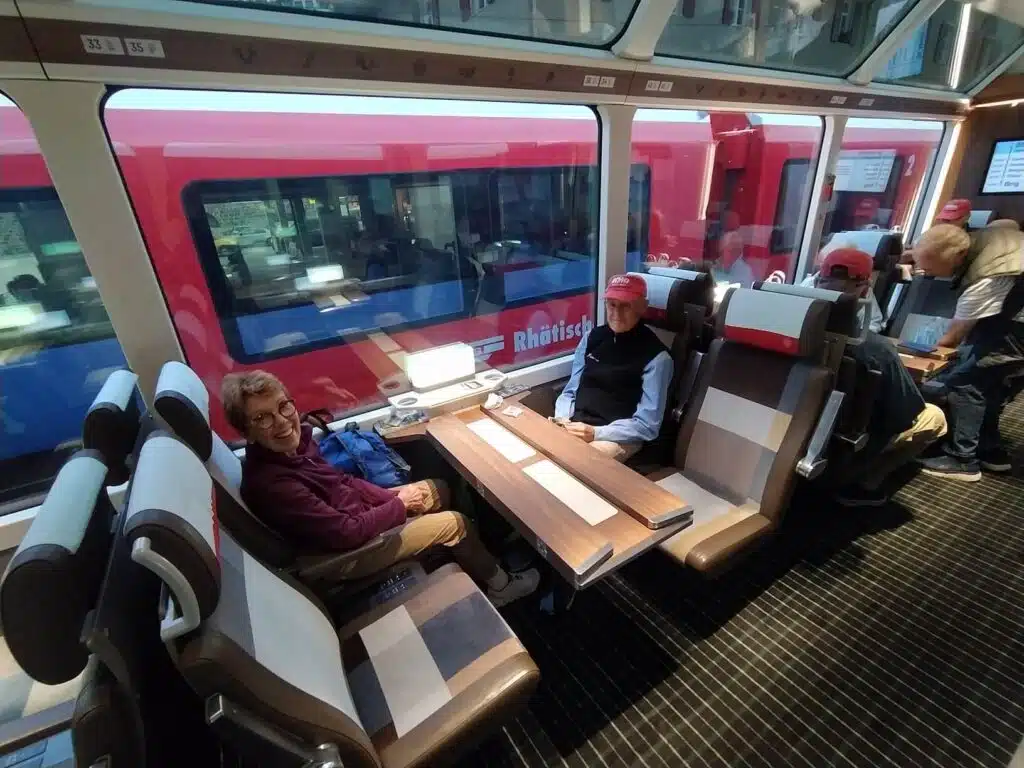
A Day On A Glacier Express: True First Class Journey
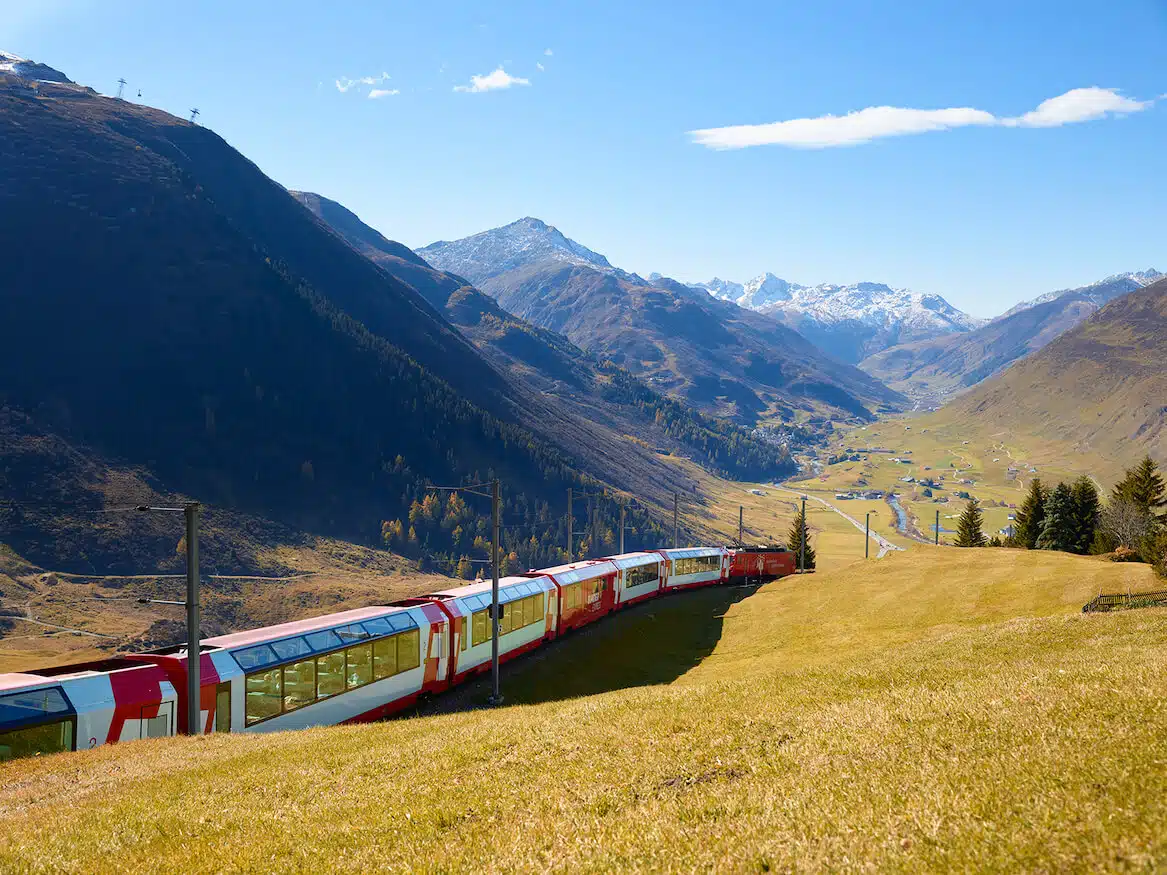
11 Scenic Train Rides With ECHO Rails
ECHO Rails train tours blend history, nature and cultural elements into one seamless travel experience. Book our comprehensive, 12-day Grand Train Tour of Switzerland and benefit from a range of amenities:
- 1st Class Swiss Pass
- Small groups (max 16 participants)
- English-speaking guides
- Luggage transfer
- Two nights in each location
- Authentic Swiss hotels
- 11 scenic train journeys


